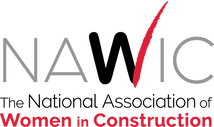
By: Makenzie Plusnick
In 2017, the National Association of Women in Construction-OSHA Alliance Committee conducted “The 2017 Survey by the NAWIC-OSHA Alliance Committee on Harassment in the Workplace.” It found that the number of women who indicated they had never experienced bullying, sexual harassment or sexism was higher than expected; however, in the detailed section, we saw a number of “No, but…” answers.
That is, “No, I have not experienced sexism, but…I do get called sweetie; the old guys like to hug; the guys say something, but then say they were just joking…” or, “I just learn to put up with it; I have thick skin, so it doesn’t bother me; I ignore it; they aren’t doing it to me anymore…” “I do get a little picked on…”
Sexism, bullying, and sexual harassment are still present in the construction industry. In spite of educating the workforce, webinars, seminars, required harassment prevention training, etc.; these three issues still exist, although in many circumstances, it may be more subtle and less overt than previously seen.
Sexual harassment and assault can happen in many different forms. As a small but vital portion of the workforce, it’s important that women and those who advocate for women in construction are able to recognize even subtle acts of harassment. These acts can include sexist remarks, inappropriate touching and commenting on someone’s appearance.
Women made up only 10.9% of the construction industry workforce in 2020, according to the U.S. Bureau of Labor Statistics. Though that may seem like a small percentage of the total workforce, women are entering the industry at a steadily increasing rate year-over-year. NAWIC President Anne Pfleger believes this trend will continue.
“Yes, the industry has changed in the sense that construction is no longer a male-dominated industry, but a male-populated industry,” Pfleger said.
NAWIC, in partnership with Safe Site Check In, surveyed over 700 members to see how they felt the industry was moving in February 2021. Among the key findings is that job opportunities for women in construction are on the rise. When presented with the statement, “The opportunities for women in construction are increasing, decreasing, or about the same,” 71% of respondents agree the opportunities are increasing. Another 28% believe they are about the same while 1% report the opportunities are decreasing.
Despite this positive trend, there is still room for improvement in the industry. When it comes to equality in the workplace, participants were asked, “On a scale of 1-100, how does your employer rank in treating men and women equally?”
- 24% ranked their employer at 100
- 22% ranked their employer at 90 or above
- 13% ranked their employer between 80-89
- 11% ranked their employer between 79-70
- 6% ranked their employer between 69-60
- 24% ranked their employer below 60
So how does the industry become more inclusive for the women entering it? How can we create safe workspaces for all, where women can work without fear of sexual harassment in any form? NAWIC believes the answer lies in continuing to educate all workers, and giving women the tools and support they need to stand up for themselves.
NAWIC has seen many positive changes for women in construction since it started, but it is imperative we keep pushing for equitable and safe workplaces for all.
NAWIC will continue to champion for all women in construction, just as our 16 founders intended in 1953 when they came together to share their experiences working in the male-dominated field. NAWIC provides a variety of trainings with a focus on advancing women’s careers, resources for companies looking to become more inclusive and diverse, and personal development opportunities. Additionally, women can network and form friendships with other women who can relate to their struggles and celebrate their victories. Visit www.NAWIC.org for more information.
About NAWIC:
The National Association of Women in Construction (NAWIC) originated as Women in Construction of Fort Worth, Texas. Sixteen women working in the construction industry founded it in 1953. Knowing that women represented only a small fraction of the construction industry, the founders organized NAWIC to create a support network for women working in a male-dominated field. Women in Construction of Fort Worth was so successful that it gained its national charter in 1955 and officially became the National Association of Women in Construction.
Today, NAWIC is still based in Fort Worth and has over 115 chapters throughout the United States that provide its members with opportunities for professional development, education, networking, leadership training, public service and more. NAWIC continues the vision of its founding members by advocating for the value and impact of women builders, professionals, and tradeswomen in all aspects of the construction industry.